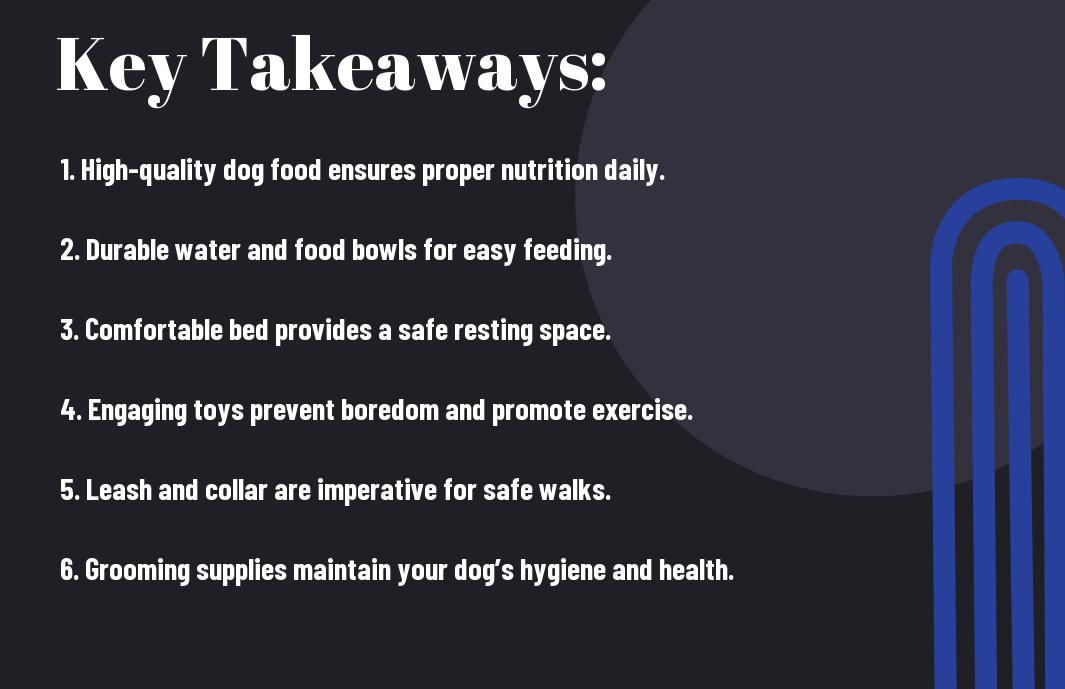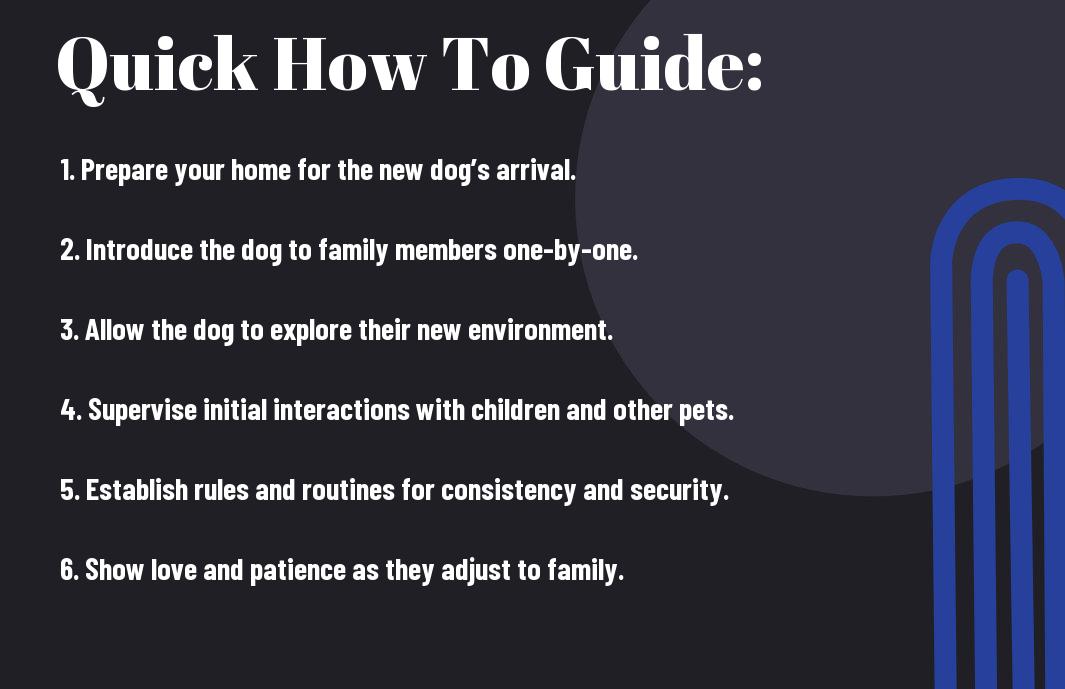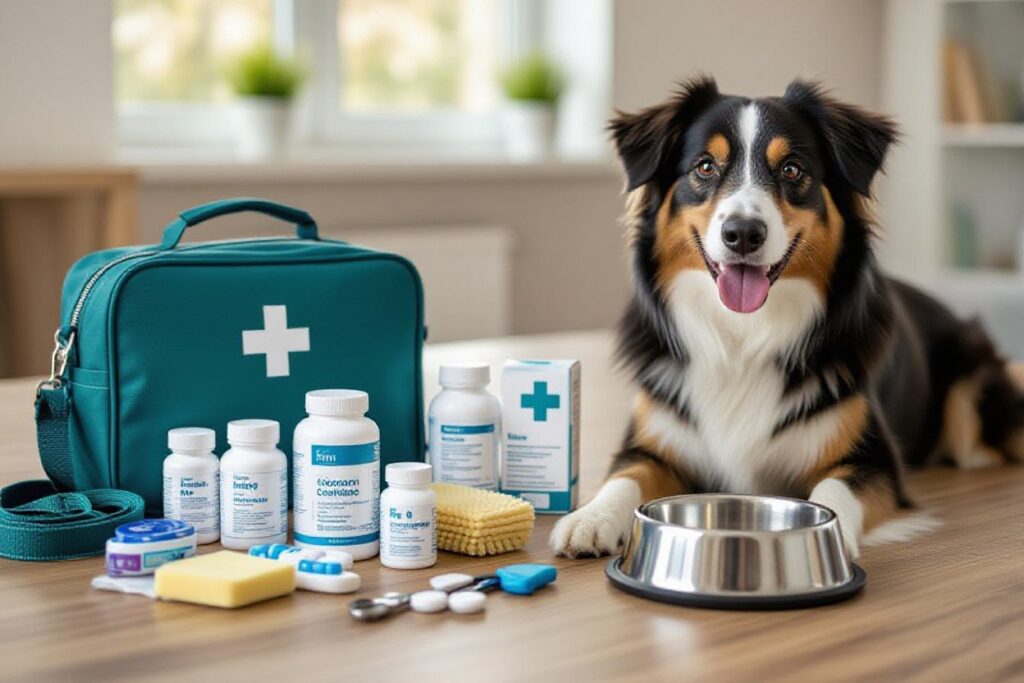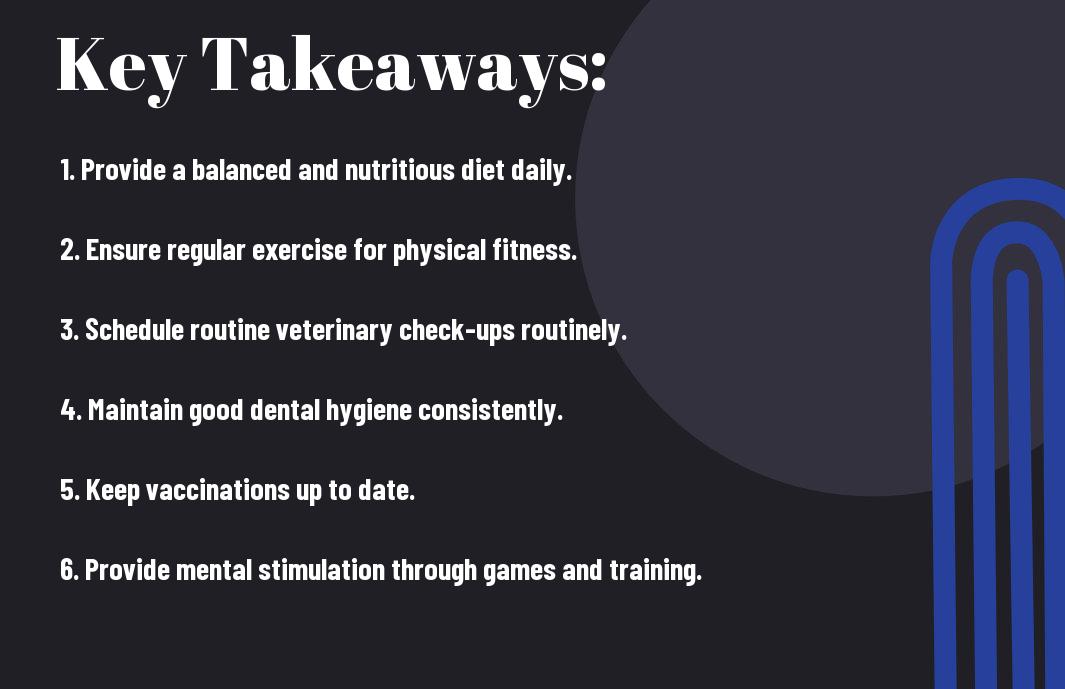Just like any family member, your dog deserves a safe and prepared environment, especially in emergencies. In this informative guide, you will learn vital first aid techniques and safety measures that every dog owner should know. From recognizing the signs of distress to creating a proper emergency kit, these tips will empower you to act confidently and swiftly when your furry friend needs help the most. Being prepared not only ensures your dog’s well-being but can also bring you peace of mind during challenging times.
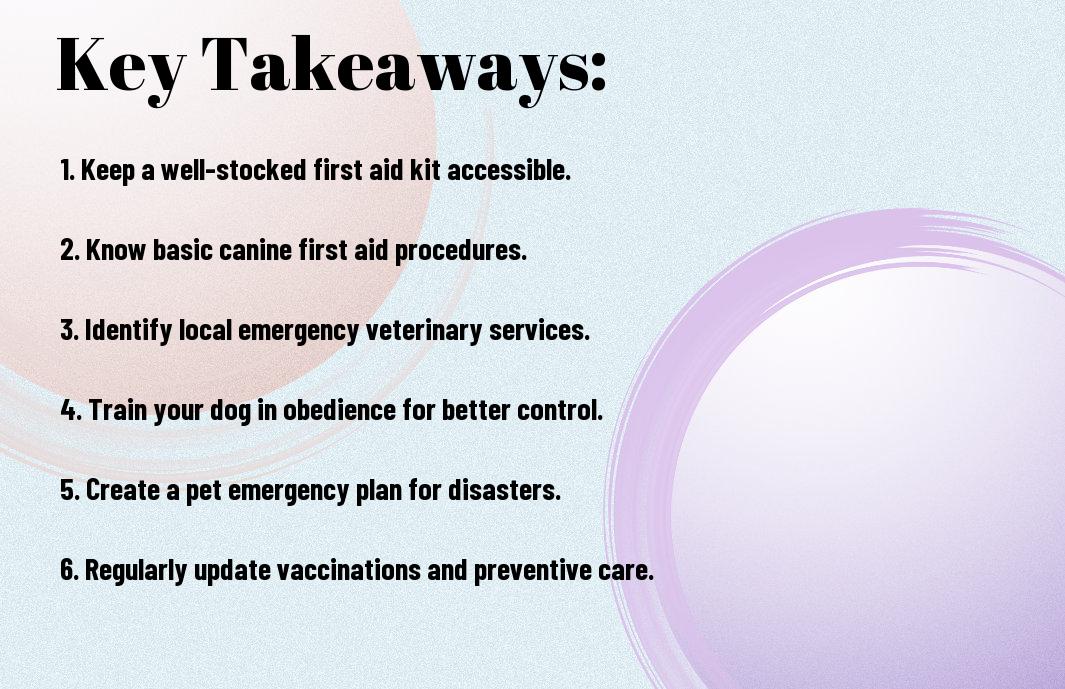
Understanding Dog Emergencies
The ability to identify potential emergencies involving your dog is vital for every pet owner. Emergencies can arise from various situations, including accidents, medical conditions, or exposure to hazards. Understanding these emergencies and how to respond can help save your dog’s life and ensure their well-being during critical moments. Being informed about what constitutes a medical emergency will empower you to act quickly and effectively when your furry friend needs help the most.
Common Medical Emergencies
An array of medical emergencies can affect dogs, and being able to recognize them is imperative for your dog’s safety. One common issue is ingestion of toxic substances, which can result in severe reactions and requires immediate veterinary assistance. Other emergencies include severe bleeding from wounds, difficulty breathing, or signs of a stroke, such as sudden loss of coordination. Recognizing these situations early can be the key to providing life-saving intervention.
Additionally, conditions such as heatstroke, bloat, and allergic reactions can escalate quickly. For instance, heatstroke can occur if your dog is left in a hot environment for too long, and symptoms can manifest rapidly. Bloat is another serious condition where the stomach fills with gas, leading to life-threatening complications. Always keep an eye on your dog’s behavior, especially during extreme weather or after consuming new foods.
Recognizing Signs of Distress
With your dog being unable to vocalize their discomfort, it’s important to be observant of their behavior for signs of distress. Changes in appetite, lethargy, excessive panting, and uncharacteristic behaviors can indicate underlying issues that require attention. Extra vigilance during activity, play, or after prolonged exposure to heat can also reveal discomfort, prompting immediate action on your part.
Poisoning is a significant concern for dog owners, as it can lead to severe health complications. Signs of poisoning may include drooling, vomiting, diarrhea, or seizures. If you suspect your dog has ingested a toxic substance, it’s imperative to seek veterinary help as soon as possible. Keeping a list of common toxic plants, foods, and household items can prove beneficial in preventing such emergencies in the first place. Your attentiveness and knowledge can go a long way in ensuring your dog’s safety and health.
Basic First Aid for Dogs
Unlike humans, dogs cannot express their discomfort or pain in words, making it imperative for you as a dog owner to be well-prepared for any emergency situations. Knowing basic first aid can help you respond effectively to injuries or health problems, ensuring your furry friend receives the necessary care until professional veterinary help is available. Whether it’s a minor scrape or a more serious injury, being equipped with the right knowledge can make all the difference in your dog’s wellbeing.
Creating a First Aid Kit
After selecting the imperatives, it’s time to assemble your dog’s first aid kit. This kit should be easily accessible, ideally stored in a waterproof container, and clearly labeled for quick identification. Include items such as antiseptic wipes, gauze pads, adhesive tape, scissors, tweezers, and a digital thermometer. Additionally, don’t forget to add your vet’s contact information and any medications your dog may require for emergencies.
Once you have gathered all necessary supplies, routinely check and update your first aid kit to ensure that all items are within their expiration dates and in good condition. Familiarize yourself with the contents of your kit so that you can act swiftly in the event of an emergency. This preparedness can provide you with peace of mind and ensure that you are ready to handle any situation that may arise.
First Aid Techniques
Around your dog, it’s important to know some basic first aid techniques that can help you manage common emergencies. For example, if your dog is bleeding, apply direct pressure to the wound with a clean cloth or gauze until the bleeding stops. If the bleeding is significant or doesn’t stop after several minutes of pressure, it’s vital to contact your veterinarian immediately.
Due to the nature of injuries that pets can sustain, being familiar with techniques such as CPR and the Heimlich maneuver for dogs can save lives. CPR involves chest compressions and providing breaths if your dog is unresponsive and not breathing. The Heimlich maneuver can help if your dog is choking. Always ensure you’re educated on these techniques to act promptly when needed, as timing can be vital in emergency situations.

Safety Practices for Dog Owners
Not every situation may be within your control, but implementing safety practices can significantly mitigate risks associated with dog ownership. It is vital to prioritize both your safety and that of your furry companion. By being aware of potential hazards and taking appropriate steps, you can create a safer environment and ensure that your dog is well-prepared for any emergencies that might arise.
Home Safety Measures
To enhance home safety for your dog, start by ensuring that your living space is free from hazards. This includes securing electrical cords, storing poisonous substances out of reach, and safely securing furniture to prevent tipping accidents. Gates can be useful to restrict access to unsafe areas, such as staircases or rooms that contain hazardous items.
Additionally, creating a designated safe zone for your dog can offer reassurance during emergencies. This area should be free from distractions and feature your dog’s favorite items, such as toys and blankets. Having a first aid kit readily available is also advisable; include vital supplies that cater specifically to your dog’s needs.
Outdoor Safety Tips
An vital aspect of dog ownership involves ensuring your pet’s safety while outdoors. Keep your dog on a leash in public spaces to prevent accidents and wandering. Ensure they wear a collar with proper identification in case they get lost. Regularly check your dog’s tags for wear and tear that may obfuscate crucial information.
- Stay vigilant about your dog’s behavior, particularly around other animals or people.
- Be aware of local wildlife that could pose a threat to your dog.
- Check the ground for any sharp objects or toxic plants that could harm your pet.
- Always carry water for your dog, especially on warm days to prevent dehydration.
- Establish a routine for walks and outdoor activities that keeps your pet active and engaged.
Thou must also keep in mind that changes in the weather can directly affect your dog’s safety. Extreme temperatures can lead to overheating in summer or frostbite in winter, so it’s vital to adjust your outdoor plans accordingly to ensure their comfort and well-being.
- Look out for signs of distress in your dog, such as excessive panting or shivering.
- Provide appropriate gear for your dog if necessary, like a coat for cold weather or booties for hot pavements.
- Never leave your dog unattended in a vehicle, as temperatures can quickly become dangerous.
- Ensure your dog is well-socialized and trained to follow commands, even in distracting environments.
- Regularly inspect your yard for escape routes that your dog might exploit.
Thou should always have a thorough understanding of your local environment to make informed decisions about where your dog can safely roam. By keeping these outdoor safety tips in mind, you contribute not only to your dog’s well-being but also to your peace of mind as a responsible dog owner.
Preparing for Natural Disasters
Despite the unpredictability of natural disasters, being prepared can make a significant difference in the safety and comfort of both you and your dog. Understanding the risks associated with your area—such as floods, earthquakes, hurricanes, or wildfires—is the first step in your preparedness efforts. Each disaster requires a specific response plan, and your responsibility extends beyond yourself to include your furry family members. Having a well-thought-out plan ensures smooth execution during emergencies, minimizing chaos and stress when time is of the essence.
Creating an Emergency Plan
Between you and your canine companion, clear communication is vital during emergencies. Begin by creating an emergency plan that includes potential evacuation routes, safe locations, and a method for contacting each other if separated. Involve your dog in the planning process; training them to respond to commands or signals can be beneficial during a crisis. It’s also wise to have a designated person who can take care of your dog if you are unable to do so during an emergency. This person should be familiar with your pet’s habits, needs, and any specific medical concerns.
In addition to having a plan in place, you should regularly review and practice it with your dog. Conducting drills helps reduce anxiety for both you and your pet when facing an actual situation. Make sure to update your emergency contact information and check that it remains current. Whether it’s a friend, family member, or a boarding facility, knowing where your dog will go in an emergency is a key part of your overall strategy.
Assembling an Emergency Pet Kit
Against the backdrop of a natural disaster, it’s vital to have a well-stocked emergency pet kit that caters specifically to your dog’s needs. This kit should include vitals such as food, water, medications, a first-aid kit, and any comfort items like a favorite blanket or toy. Be sure to adjust the contents of your kit based on the size and dietary restrictions of your dog. More importantly, make sure all items are packed in a durable, waterproof container that is easy to transport in case of an evacuation. Additionally, having copies of your pet’s medical records, including vaccination certificates and microchip details, ensures you have critical information ready if you need to relocate.
Disasters can impact your family in various ways, and constructing an emergency pet kit is an integral part of your strategic preparation. Beyond the basic supplies, consider including a leash, muzzle, and a portable crate to safely transport your dog. Always aim for sufficient resources to cover at least three days, as conditions can vary immensely during unexpected events. Being proactive today means you and your furry friend will face any disaster with confidence and security tomorrow.

Training and Socialization for Emergencies
Many dog owners underestimate the power of training and socialization in emergency situations. When your dog is well-trained, you have a better chance of managing them during stressful events. Basic commands such as “sit,” “stay,” and “come” are not just for fun; they can provide you with necessary control over your pet in unexpected scenarios. Additionally, a well-trained dog is less likely to panic or react negatively when faced with unfamiliar situations, enhancing both their safety and yours. Mastering these commands is a step towards ensuring that your dog can listen to you, even when emotions run high.
Importance of Basic Commands
Above all, establishing a foundation of basic commands is vital for the safety of both you and your dog. When you teach your dog to respond promptly to commands, you equip yourself with tools that can help you redirect their behavior in chaotic situations. For example, if your dog gets loose during an emergency, being able to call them back to you could prevent disastrous consequences. Training your dog to obey commands consistently can significantly enhance their reliability and your peace of mind.
Socialization Techniques
Beside providing training, socialization techniques are equally important in preparing your dog for emergencies. Introducing your dog to a variety of environments, people, and animals can lower their anxiety levels when faced with new experiences. This exposure helps them become more adaptable, allowing them to handle unexpected situations with greater calm. Socialization should start early but is important at any age; it’s never too late to help your dog become accustomed to different settings and stimuli.
Indeed, socialization involves more than just encountering new places and people; it also includes gradually introducing your dog to sounds, sights, and smells they may not typically experience. For instance, exposing your dog to loud noises like sirens or traffic can help them remain composed during emergencies. Make every experience positive by rewarding your dog with treats and praise. This not only strengthens their confidence but also reinforces the message that new experiences can be safe and enjoyable, which is vital during any high-stress situation.
Resources for Dog Owners
Your role as a responsible dog owner includes knowing where to find resources that can assist you in emergencies. Having immediate access to veterinary clinics, community support groups, and educational materials is key to keeping your pup safe and healthy. In this section, you will learn about various resources that can help you prepare and respond effectively to potential situations involving your dog.
Veterinary Clinics and Services
The first step in any emergency situation involving your dog is having the contact information for local veterinary clinics and emergency animal hospitals readily available. Ensure that you have your primary veterinarian’s number and address easily accessible, as well as the phone numbers of nearby emergency animal services. Familiarize yourself with their operating hours and any specific protocols they may have for urgent visits. This ensures you can respond quickly if your dog needs immediate care.
Additionally, consider researching mobile veterinary services and telemedicine options that can provide support when you can’t reach a clinic right away. Many veterinary professionals offer virtual consultations for non-emergency situations, allowing you to receive expert guidance wherever you are. Keeping a list of these services on hand can make a significant difference in your response time during a crisis.
Community Support Groups
Before an emergency strikes, it’s beneficial to engage with community support groups dedicated to dog owners. These groups often provide invaluable resources, including information on first aid techniques, training sessions, and peer support during stressful situations. Joining local dog clubs or online forums can connect you with fellow dog owners who share similar experiences and insights, enhancing your preparedness and response capabilities.
This network can also be a source for sharing emergency contacts and services in your area, as well as fundraising efforts for local animal shelters and rescue groups. Being part of a community not only provides you with crucial information but also creates opportunities for collective action in times of need, helping all dog owners to better support each other and their pets in emergencies.
Conclusion
Drawing together necessary elements of emergency preparedness, it is vital for you as a dog owner to be equipped with first aid knowledge and safety tips. Familiarizing yourself with common canine health issues and their symptoms can significantly enhance your ability to respond effectively during emergencies. By knowing how to perform basic first aid, such as handling wounds or managing choking incidents, you not only protect your dog but also create a safer environment for your entire household. Don’t forget to keep a well-stocked pet first aid kit on hand, ensuring that you always have the necessary tools and supplies available in case of an unexpected situation.
Moreover, maintaining open communication with your veterinarian can further empower you in your journey of pet care. Regular check-ups and discussions about potential risks can help you anticipate challenges and implement preventive strategies. Understanding your dog’s specific needs, combined with preparedness techniques, fosters a strong bond built on trust and security. By taking these steps, you fortify your role as a responsible dog owner and ensure that your furry friend will receive the care they need in any emergency.
Q: What should I include in a first aid kit for my dog?
A: A well-stocked first aid kit for your dog should include the following items: adhesive bandages and gauze pads for wound coverage, antiseptic wipes or solution to clean cuts and scrapes, tweezers for removing splinters, scissors to cut tape or materials, a digital thermometer to check for fever, a muzzle to prevent biting in stressful situations, and latex gloves to protect yourself while providing care. Additionally, consider including a small flashlight, emergency contact numbers for your veterinarian, and any specific medications your dog might need. Regularly check and replenish your kit as items may expire or become unusable over time.
Q: How can I assess if my dog requires emergency medical attention?
A: If you notice concerning symptoms in your dog, it may indicate the need for immediate medical attention. Symptoms include difficulty breathing, excessive bleeding, seizures, prolonged vomiting or diarrhea, signs of pain (whining, pacing, or reluctance to move), or unusual behavior. Any incident of ingestion of harmful substances, such as chocolate or medications not prescribed for your dog, also necessitates urgent veterinary consultation. When in doubt, it is always best to err on the side of caution and contact your veterinarian or an emergency animal clinic for guidance.
Q: What are some basic safety tips for keeping my dog safe during emergencies?
A: To enhance your dog’s safety during emergencies, consider the following tips: Create a pet-friendly emergency plan that includes designated safe areas, escape routes, and a backup caregiver in case you are unable to care for your pet. Ensure your dog is microchipped and wears an ID tag with your contact information to facilitate a quick reunion if separated. Teach your dog basic commands, such as “come” and “stay,” as these can be vital in emergencies. Finally, regularly update your dog’s vaccination status and health records, ensuring they are easily accessible in case of evacuation or emergency vet visits.
